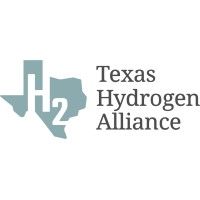The U.S. Department of Energy has granted 11 projects $36 million to accelerate the development of mCDR
)
Recently the U.S. Department of Energy (DOE) announced that they will be awarding $36 million to 11 projects, spread over 8 states. This has been done in order to drive forwards the Biden-Harris Administration’s efforts and to accelerate the development of marine carbon dioxide removal (mCDR).
The funding for these projects comes from the DOE’s Sensing Exports of Anthropogenic Carbon through Ocean Observation (SEA-CO2). The aim of these projects will be to support efforts to measure, report and validate mCDR, whilst also pin-pointing realistic, viable, cost-effective and energy efficient carbon removal solutions. The drive behind making these investments and developing these kinds of projects centers around the need to find innovative approaches which will effectively reduce green house gas emissions. This will drive forwards the Biden-Harris Administration’s effort as reducing greenhouse gas emissions is crucial to this partnership’s aim to deal with the climate crisis and achieve net-zero emissions by 2050.
mCDR involves the use of beneficial techniques which are able to work through the use of the ocean’s natural carbon capture and storage processes. The use of mCDR combined with other carbon dioxide removal methods, shows potential to mitigate and remove around hundreds of millions of tons of harmful carbon dioxide emissions per year. The mCDR process occurs across long periods of time and spans large surfaces and volumes of the ocean. The SEA-CO2 program is aware that scalable, cost-effective technologies, which will be used to measure, report, and validate various mCDR approaches are extremely important in developing and expanding this industry. Furthermore, the evolution of this industry is essential to supporting President Biden’s clean energy and climate goals.
The U.S. Secretary of Energy, Jennifer M. Granholm, commented, “Reaching President Biden’s ambitious decarbonization goals and avoiding the worst impacts of climate change will require a wide range of innovative climate solutions, from common-sense approaches like improving energy efficiency to novel applications like utilizing the ocean’s natural carbon removal abilities to reduce greenhouse gas pollution from the atmosphere. With critical funding from DOE, project teams from across the country will develop groundbreaking new technologies to cut emissions that will help combat the climate crisis while reinforcing America’s global leadership in the clean energy industries of the future.”
The project will be managed by the DOE’s Advanced Research Projects Agency-Energy (ARPA-E), who recently announced which companies will be involved in this project. Some names include, Bigelow Laboratory for Oceanic Sciences (East Boothbay, ME), GE Research (Niskayuna, NY) and Pacific Northwest National Laboratory (Seattle, WA). All the companies involved have been specifically selected for the crucial role they will play and the skills they will bring to this project. The overall focus will be to create new and appropriately scaled sensors and models, which will quantify the effectiveness of mCDR techniques.



)
)
)
)
)
)
)



)
)
)
)
)
)
)
)
)
)
)
)
)
)

)

)
)
)

)
)
)
)
)
)
)
)
)
)
)

)

)
)
)
)
)
)
)
)
)


)
)
)

)
)
)

)
)
)
)
)

